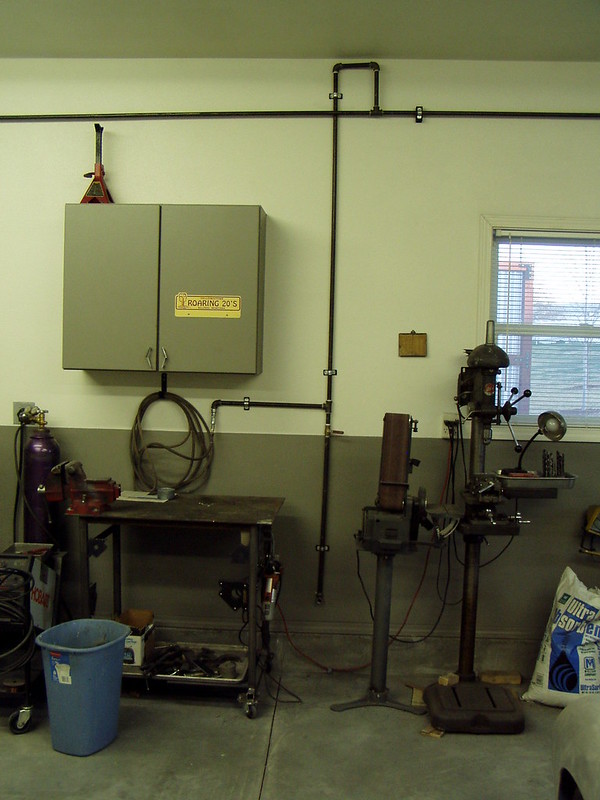D
Deleted member 12521
Guest
Guest
Offline
Hi All,
I've got a two-stage, 60 gallon, 5 hp compressor, which I'll be using for air tools, sandblasting and painting. I'm new to this hobby, and from what I've read water and other contaminants can ruin your tools, cause your sandblaster to clog and no end of problems laying down paint.
My current plan is to run some air line (black pipe or copper, the relative coolness of which which I understand will cause some of the moisture in the air to condense and be able to be removed at an appropriately-located drain) up the wall from the corner where the compressor is located, into the attic and back out the ceiling in the centre of the shop where I'll mount a retractable 50' reel of 3/8 PVC hose. I don't need individual hookups all over the shop (I find using a retractable extension cord that I've similarly mounted near the centre of the ceiling to be very convenient. I plug into that more often than any wall outlets). I'm not sure what diameter pipe to use. 1/4"? 1/2"?
I also plan on putting a desiccant filter and a coalescing filter in between the pipe and PVC hose. I've seen some with 3/8 fittings and others with 1/4. SCFM ratings also vary. I'm not sure what will work best for the intended uses.
Any and all advice, suggestions or experiences welcome and appreciated.
I've got a two-stage, 60 gallon, 5 hp compressor, which I'll be using for air tools, sandblasting and painting. I'm new to this hobby, and from what I've read water and other contaminants can ruin your tools, cause your sandblaster to clog and no end of problems laying down paint.
My current plan is to run some air line (black pipe or copper, the relative coolness of which which I understand will cause some of the moisture in the air to condense and be able to be removed at an appropriately-located drain) up the wall from the corner where the compressor is located, into the attic and back out the ceiling in the centre of the shop where I'll mount a retractable 50' reel of 3/8 PVC hose. I don't need individual hookups all over the shop (I find using a retractable extension cord that I've similarly mounted near the centre of the ceiling to be very convenient. I plug into that more often than any wall outlets). I'm not sure what diameter pipe to use. 1/4"? 1/2"?
I also plan on putting a desiccant filter and a coalescing filter in between the pipe and PVC hose. I've seen some with 3/8 fittings and others with 1/4. SCFM ratings also vary. I'm not sure what will work best for the intended uses.
Any and all advice, suggestions or experiences welcome and appreciated.


 Hi Guest!
Hi Guest!

 smilie in place of the real @
smilie in place of the real @
 Pretty Please - add it to our Events forum(s) and add to the calendar! >>
Pretty Please - add it to our Events forum(s) and add to the calendar! >> 


